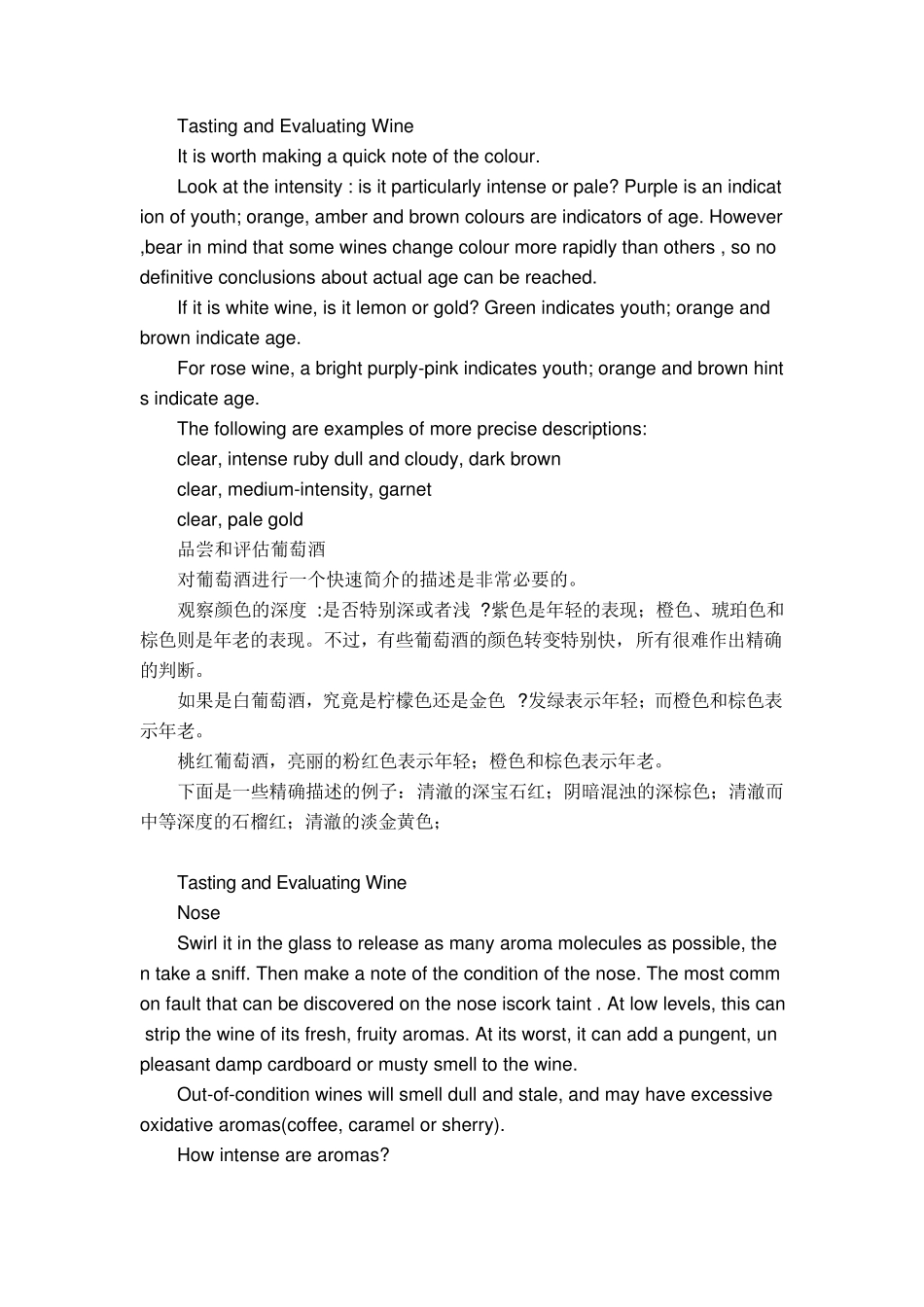WSET Adv anced Lev el – Looking behind the Labels 酒标背后 Tasting and Evaluating Wine Tasting wine rather than simply drinking it increases our appreciation of the wine by allowing us to examine it in detail.Although the process can seem repetitive at first, with practice it becomes a subconscious habit. Forcing us to put our sensations into words means the impression of the wine lingers longer in our memory. It also helps us communicate to other people what the wine is like, sometimes long after we have tasted it. This is an essential skill for anyone involved in the production, distribution or sale of wine. As we will see in Chapter 2,successful food and wine matching requires us to consider the separate components of the wine.The systematic approach to tasting outlined below, shows us how to do this. 葡萄酒品尝和评估 葡萄酒品尝实际上就是通过品尝时的细节判断,为饮用者增加感官享受。这样的过程在一开始需要反复练习,时间久了就成为一种下意识的品尝习惯。强迫自己把感官体会用语言描述出来即便于记忆,同时又有助于我们和别人交流品尝时的感觉。这对于任何一个生产商、经销商和销售人员都是极为重要的技能,就如后面第二章里提到的成功的餐酒搭配要求能够考虑到酒的各个口感组成。我们就用下面的品尝概要来描述如何进行品尝和产品评估。 Tasting and Evaluating Wine 品尝和评估 Preparation for tasting The idealtasting room will be odour-free(no smells of cleaning products, tobacco, food or perfume), withgood natural light , andwhite surfacesagainst which we can judge the appearance of our wines. Ourtasting palate should be clean , and unaffected by tobacco, food, coffee, gum or toothpaste. Chewing a piece of bread can help remove any lingering flavors. Hayfever, colds and fatigue affect our ability to judge wines, because they affect our senses of taste and smell.Many glasses...


